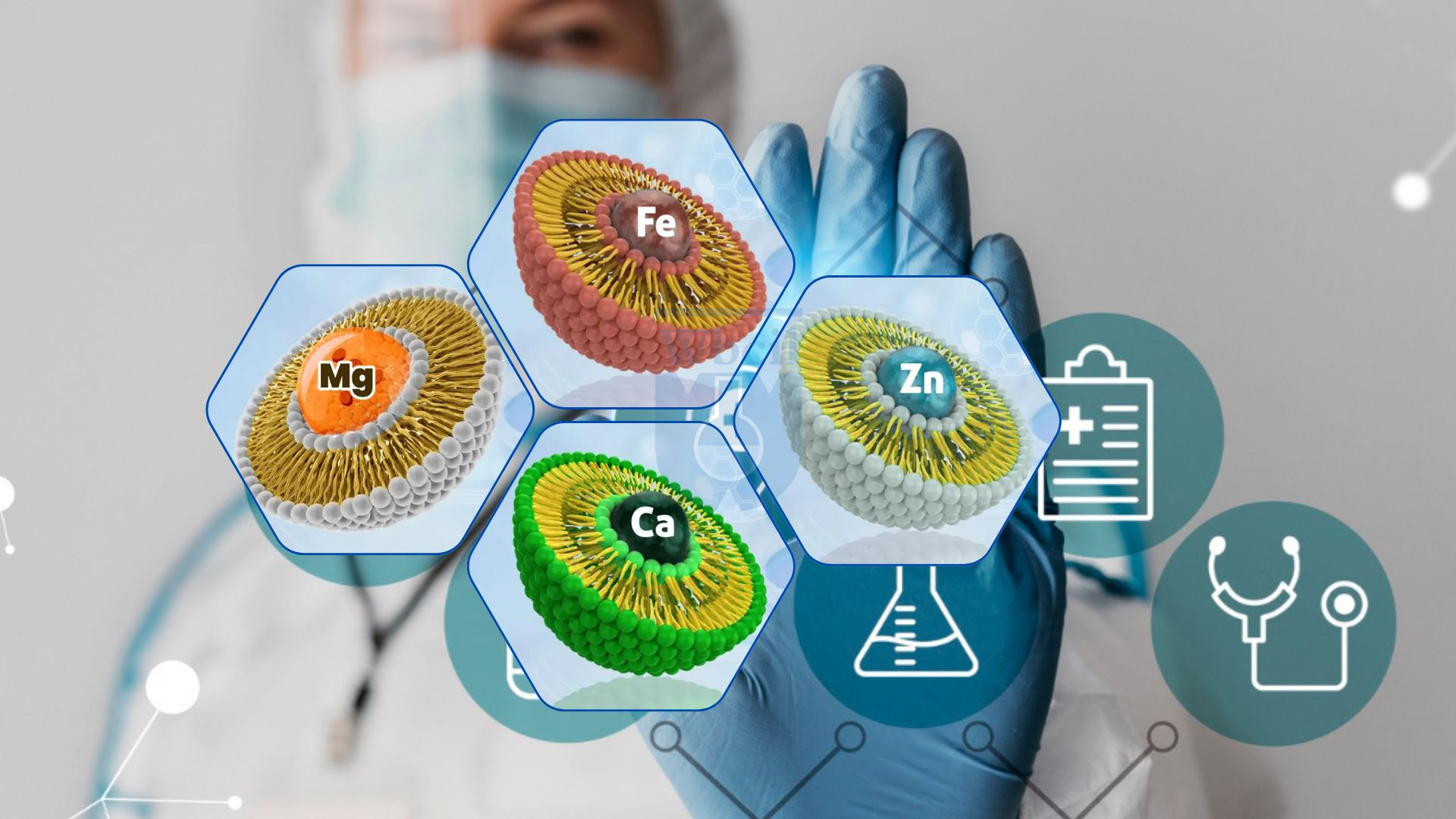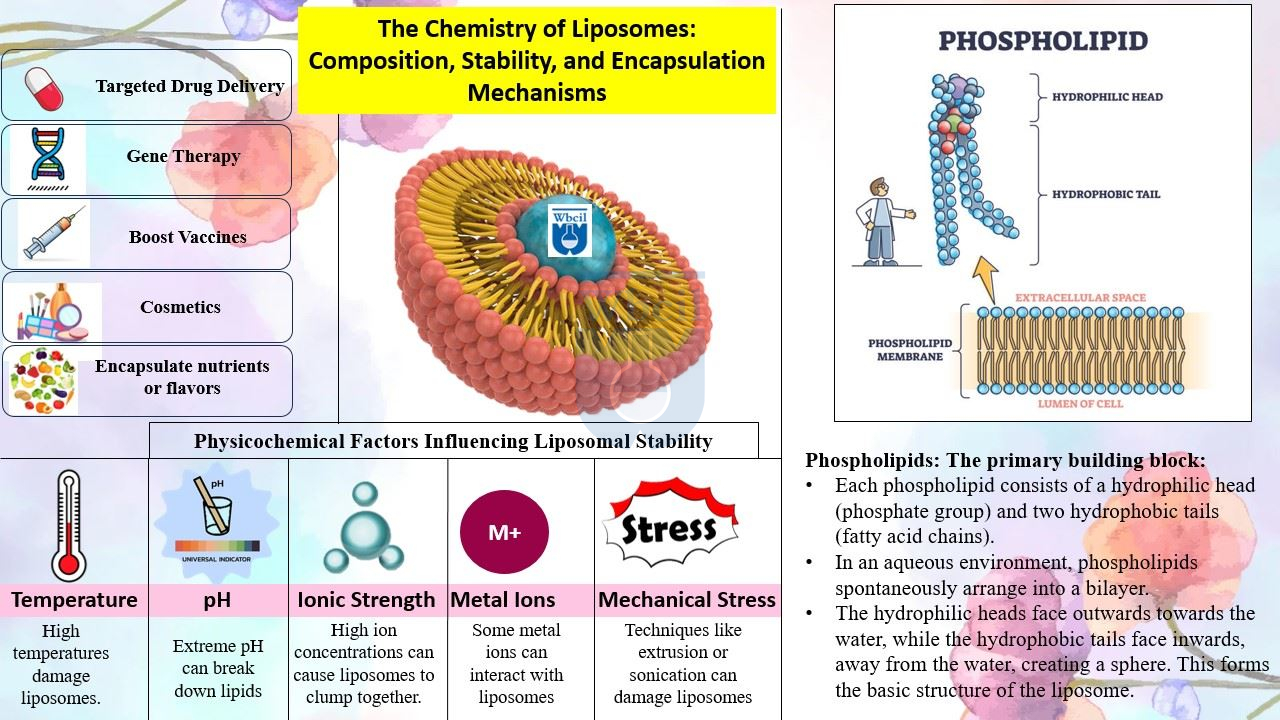The Chemistry of Liposomes: Composition, Stability, and Encapsulation Mechanisms
Imagine tiny bubbles, smaller than the width of a human hair, capable of carrying precious cargo directly to where it’s needed in the body. These aren’t ordinary bubbles; they’re liposomes, microscopic spheres made of the same material that forms the walls of our cells. Think of them as miniature delivery trucks, navigating the complex landscape of our bodies to deliver drugs, genes, or even cosmetics with pinpoint accuracy. This blog post dives deep into the fascinating chemistry of these versatile vesicles, exploring their composition, stability, and the ingenious ways they encapsulate their precious cargo.
Liposomes, these phospholipid-based vesicles, are revolutionizing drug delivery and nanotechnology. First described by Alec Bangham in the 1960s, they initially seemed like a laboratory curiosity. However, their potential in drug delivery and industrial applications quickly became apparent.
Today, liposomes play a crucial role in biomedicine, cosmetics, gene therapy, and targeted drug delivery. They are at the forefront of personalized medicine, offering the promise of delivering the right treatment to the right place at the right time. This article will explore the intricate chemistry behind these tiny powerhouses, focusing on their composition, physicochemical stability, and the clever mechanisms they employ for encapsulation.

Composition and Structural Characteristics of Liposomes
Liposomes are essentially tiny spheres made of a double layer of lipids, called a lipid bilayer. This bilayer structure is the key to their unique properties.
Basic Components of Liposomes
- Phospholipids: These are the workhorses of the liposome. Think of them as having a water-loving “head” (hydrophilic) and two water-fearing “tails” (hydrophobic). When placed in water, these molecules arrange themselves spontaneously, with their heads facing outwards towards the water and their tails tucked inwards, away from the water, forming the bilayer. Common phospholipids include Phosphatidylcholine (PC), Phosphatidylethanolamine (PE), and Phosphatidylserine (PS).
- Cholesterol: Cholesterol acts like a molecular “glue” and “shock absorber” within the lipid bilayer. It modulates membrane rigidity and fluidity, affecting how drugs are released from the liposome. Too much cholesterol makes the membrane stiff, while too little makes it too floppy.
- Surface Modifications: Sometimes, liposomes are decorated with other molecules to enhance their performance. PEGylation, the addition of Polyethylene Glycol (PEG), acts like a stealth cloak, extending circulation time by preventing the immune system from recognizing and destroying the liposomes. Ligand-modified liposomes, on the other hand, are like guided missiles, using targeting molecules like antibodies or peptides to deliver their cargo specifically to diseased cells.
Types of Liposomes Based on Composition and Charge
Liposomes come in different flavors, each with its own unique characteristics:
- Neutral Liposomes: These are the most basic type, composed mainly of neutral phospholipids like PC.
- Cationic Liposomes: These carry a positive charge, making them ideal for delivering negatively charged molecules like DNA or RNA in gene therapy. Think of them as molecular magnets, attracting the genetic material.
- Anionic Liposomes: These have a negative charge, which can influence their stability and how they interact with cells.
Stability of Liposomes: Key Factors and Degradation Mechanisms
Liposomes, like any structure, are susceptible to degradation. Maintaining their stability is crucial for their effectiveness.
Physicochemical Factors Influencing Liposomal Stability
- pH and Buffer Conditions: Think of pH as the “acidity level” of the environment. Extreme pH values can disrupt the delicate balance of the lipid bilayer. Buffers, like HEPES or phosphate, are used to maintain the optimal pH for liposome stability.
- Temperature and Storage Conditions: High temperatures can be like a “melting pot” for liposomes, accelerating the breakdown of phospholipids. Freeze-drying (lyophilization) is like putting the liposomes into a state of suspended animation, allowing for long-term storage.
- Size and Zeta Potential: Smaller liposomes (50-200 nm) are generally more stable. Zeta potential, a measure of the surface charge, is like a “repulsion force” between liposomes. A high zeta potential (> ±30 mV) prevents liposomes from clumping together.
Common Degradation Pathways in Liposomal Systems
- Oxidation of Phospholipids: Oxygen, light, and free radicals are like “rust” for liposomes, causing the phospholipids to break down. Antioxidants, like Vitamin E, act like “rust inhibitors,” protecting the liposomes from oxidation.
- Hydrolysis of Ester Bonds: Water can also attack the phospholipids, breaking them down into smaller components. Chelating agents, like EDTA, act as “scavengers,” preventing metal ions from catalyzing this process.
- Fusion and Aggregation: Liposomes can sometimes fuse together or clump, like marbles sticking together. Stabilizers, like PEG, act like “spacers,” preventing this from happening.

Encapsulation Mechanisms in Liposomes
The real magic of liposomes lies in their ability to encapsulate and deliver drugs.
Types of Drug Encapsulation in Liposomes
- Hydrophilic Drug Encapsulation: Water-soluble drugs are like “water balloons” inside the liposome’s aqueous core.
- Hydrophobic Drug Encapsulation: Water-fearing drugs are like “oil droplets” nestled within the lipid bilayer.
- Amphiphilic Drug Encapsulation: These drugs are like “chameleons,” partially water-loving and partially water-fearing, and can reside in both the core and the bilayer.
Techniques for Liposome Preparation and Drug Loading
- Passive Loading: This is the simplest method, where drugs are added during liposome formation. However, it’s not very efficient.
- Active (Remote) Loading: This is a more sophisticated method that uses gradients, like pH or ion gradients, to “pull” drugs into the liposomes after they’ve formed. It’s much more efficient.
- Solvent Injection Methods: These methods are used for encapsulating hydrophobic drugs.
- Freeze-Thaw Cycling: This method helps to improve the encapsulation of sensitive biological molecules.
Applications of Liposomes in Biomedical and Pharmaceutical Sciences
Liposomes are transforming medicine and cosmetics.
Liposomes in Drug Delivery
- Cancer Therapy: Liposomal drugs like Doxil deliver chemotherapy drugs directly to cancer cells, minimizing side effects.
- Gene Therapy: Cationic liposomes are used to deliver genes or mRNA, as seen in some COVID-19 vaccines.
- Targeted Nanomedicine: Antibody-decorated liposomes can target specific cells, like cancer cells, for precision therapy.
Liposomes in Cosmetics and Skincare
Liposomes have found a niche in the cosmetics and skincare industry due to their ability to enhance the delivery of active ingredients. These microscopic spheres, composed of a lipid bilayer, can encapsulate a variety of compounds, including vitamins, antioxidants, peptides, and other beneficial agents [1]. Their structure allows for improved penetration of these ingredients into the deeper layers of the skin, bypassing the stratum corneum barrier and potentially increasing their efficacy [2]. By protecting sensitive ingredients from degradation, such as oxidation, liposomes can also improve their stability and prolong their release, leading to sustained effects [3]. Furthermore, liposomes can be tailored to target specific skin layers or cells, maximizing the delivery of the active ingredient where it is most needed [4].
This targeted delivery can be particularly beneficial for addressing specific skin concerns, such as wrinkles, hyperpigmentation, or dryness [5]. While further research is needed to fully elucidate the long-term effects and optimal formulations of liposomal cosmetics, their current applications and potential for future development suggest a promising role in the skincare market [6].
Future Directions and Challenges in Liposomal Chemistry
The future of liposomes is bright.
- Advancements in Liposomal Nanotechnology: Stimuli-responsive liposomes, which release their cargo in response to specific triggers like pH or temperature, are being developed in liposomal nanotechnology. AI is also being used to design even better liposomes.
- Challenges in Large-Scale Production: Manufacturing liposomes at scale can be expensive and complex. Regulatory hurdles also need to be addressed.
- Next-Generation Liposomal Formulations: Researchers are exploring hybrid liposome-polymer nanoparticles and liposomes for CRISPR gene editing.
Conclusion
Liposomes are truly remarkable structures. Their unique composition, stability, and encapsulation mechanisms make them invaluable tools in drug delivery, cosmetics, and nanomedicine. From delivering life-saving cancer drugs to enhancing skincare, liposomes are making a real difference. As research continues, we can expect even more innovative applications of these tiny bubbles with big impact.
1. Akhtar, F., Rizwanullah, M., Amin, S., Bhatnagar, A., & Ahmad, F. J. (2016). Liposomes: a novel drug delivery system for skin care. Journal of cosmetic dermatology, 15(4), 725-735.
2. Lademann, J., & Jacobi, U. (2002). The skin: a natural barrier. APLAR journal of rheumatology, 5(2), 65-71.
3. Schreier, S., & Bouwstra, J. A. (1994). Microemulsions and liposomes in the delivery of bioactive compounds to the skin. Advanced drug delivery reviews, 12(1-3), 19-47.
4. El-Sayed, M. E., Abdallah, O. Y., Sadek, M. A., & Mahmoud, A. A. (2006). Liposomes for enhanced skin penetration of drugs: a review. Pharmaceutical research, 23, 803-820.
5. Ananthapadmanabhan, K. P., Moore, D. J., Subramanyan, K., Misra, M., & Meyer, F. (2013). Cleansing without compromise: the impact of cleansers on the skin barrier and the technology of mild cleansing. Dermatologic therapy, 1 26(2), 162-175.
6. Fiume, M. M. (Ed.). (2014). Cosmetic ingredient review: final report on the safety assessment of phospholipids as used in cosmetics. Cosmetic Ingredient Review Expert Panel.
